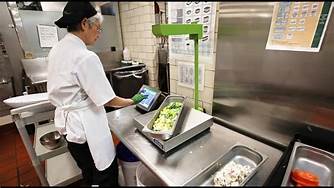This article, by Allissa Link, discusses food waste and the possible technological advancements that can reduce it. Food waste is the number one contributor to landfills by volume. As the global population increases, food efficiency is of great importance and steps should be made to improve this problem.
“Waste from consumer-facing businesses and homes accounts for more than 80 percent of total food waste.”
–ReFED
Consumer-facing businesses refer to grocery stores and restaurants. Certain techniques to reduce food waste includes training staff about the awareness of this. Technologies such as Leanpath and Winnow have recently been brought to the market as well. These technologies monitor what is going into the garbage and allow managers to become aware of the different areas where food waste is occurring.
Homes are the largest area of food waste world-wide. One of the most important things to do is be aware of this as a problem. There are lots of apps that help track food in your fridge and when it will reach its expiration date. Better storage habits also create a more efficient system that is less prone to food waste.
This article is helpful to my project because food pantries a great saver of food waste, but they also cause a lot of food waste too. It is a common concern for food pantry managers to run out of food for their community. Trying to benefit local nearby homes and businesses with these food-saving strategies will indirectly increase the amount of people food pantries are able to serve.




